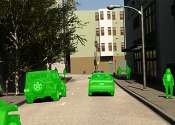Computer vision researchers use motion to discover objects in videos
Researchers at Carnegie Mellon University's Robotics Institute have shown that computer vision systems can more easily detect objects in motion—like a car driving down the street or a person walking in a crosswalk—than ...
Jul 27, 2023
0
176









